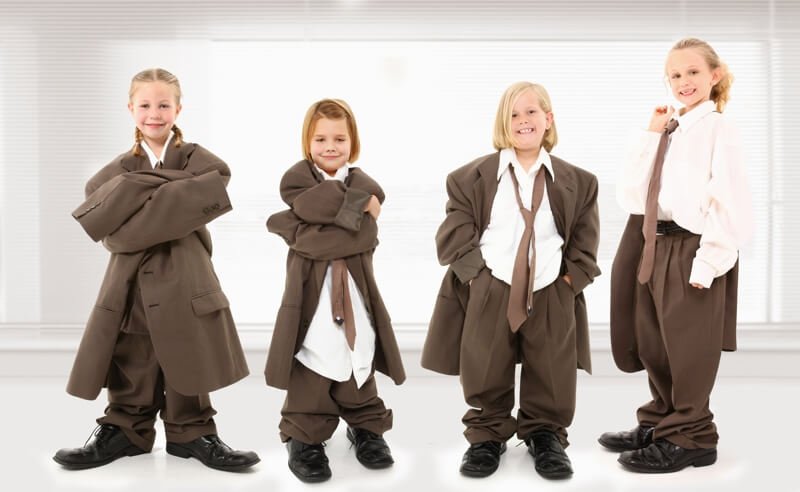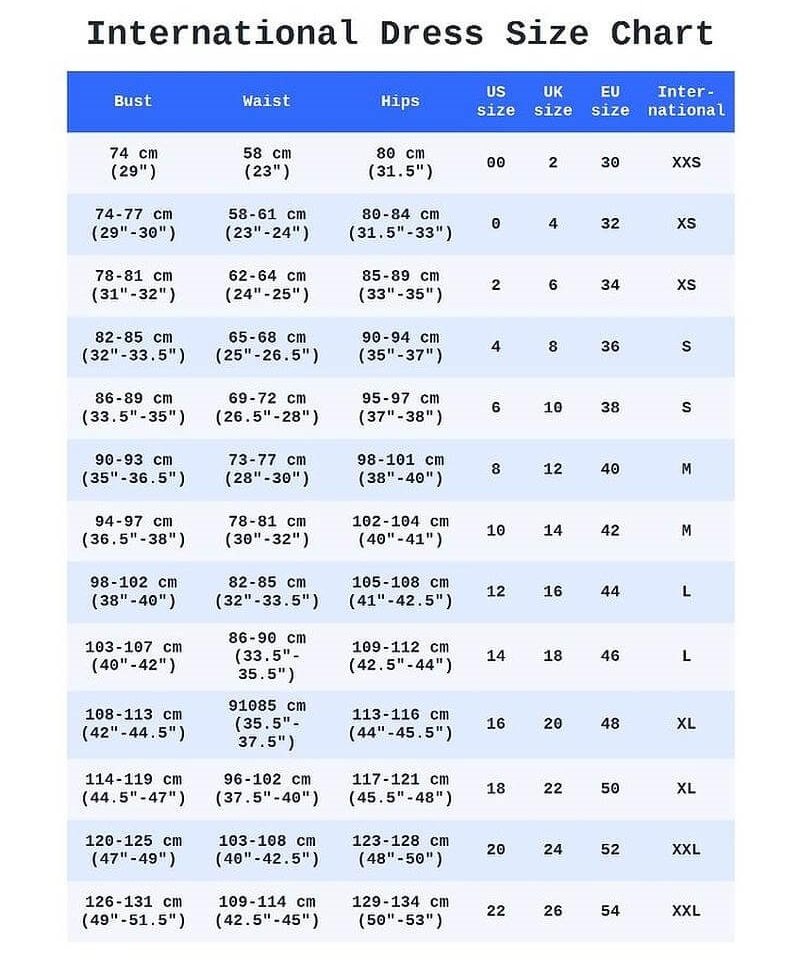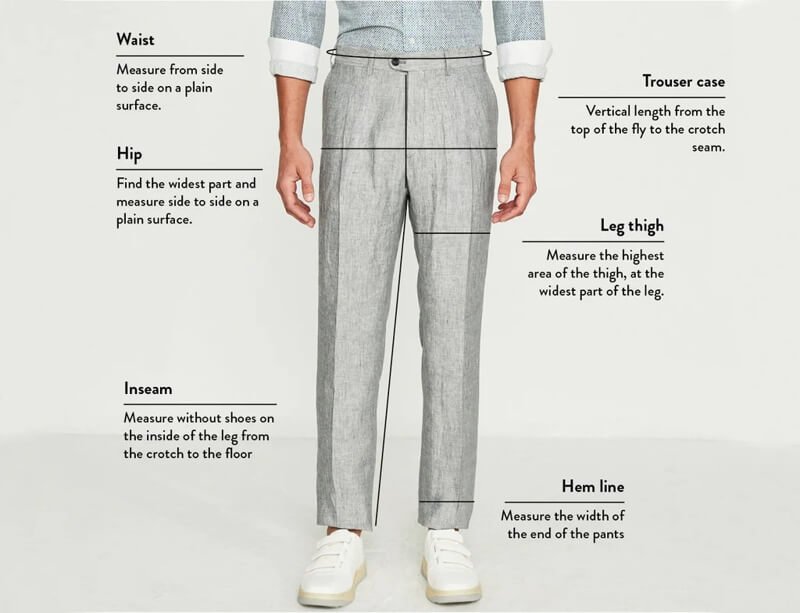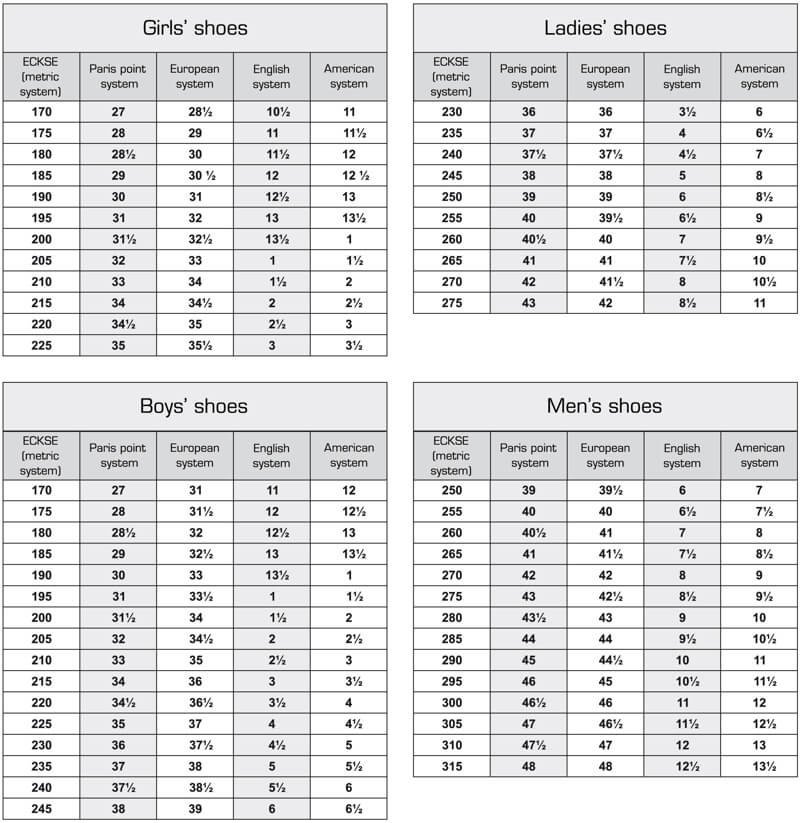International Clothing Size Chart and Conversion Guide (US, UK, EU, Asia)
Expanding your clothing business globally opens exciting opportunities, yet navigating international sizing can feel like a major hurdle. Confusing size charts lead to customer frustration and costly returns. For small businesses selling internationally, especially to the US market, accurate sizing is not just about fit – it’s about customer satisfaction and brand reputation. Incorrect size information results in lost sales and damaged trust. This guide provides clarity on international clothing sizes, offering practical conversion charts and expert tips. Gain confidence in labeling for global markets and ensure your customers find their perfect fit, wherever they are.
1. Decoding international clothing size charts: Your expert guide
1.1 Why international size charts matter for your clothing business
For businesses selling clothes across borders, international size charts are not just a helpful addition – they are essential for success. Accurate size charts directly impact customer satisfaction. When customers can confidently choose the right size, they are more likely to be happy with their purchase and become repeat buyers.
Furthermore, providing clear size information helps reduce returns and exchanges due to incorrect sizing, saving your business significant costs and logistical headaches. In international markets, especially with online sales, size charts are crucial for building trust.
Customers in different countries rely on these charts to understand unfamiliar sizing systems. By offering comprehensive and accurate size guides, you project a global brand image of professionalism and reliability, fostering business growth and customer loyalty worldwide.

1.2 The global size maze: Understanding different size systems
Navigating global sizing can feel like entering a maze. It’s important to understand that clothing size systems are far from universal. Significant regional differences exist, with each country or region often having its own unique sizing standards.
What is considered a size “small” in one country might be a “medium” or even “large” elsewhere. Adding to the complexity, manufacturer variation is also common. Even within the same sizing system, sizes can differ between brands and clothing styles. Therefore, relying solely on general size assumptions is risky. To accurately cater to a global customer base, businesses must understand and clearly communicate these diverse size standards.
2.1 Age vs. height: Decoding children’s size charts
When it comes to children’s clothing, understanding size charts is particularly important, as sizing methods vary significantly. The two primary approaches are age-based sizing and height-based sizing. Many countries use age ranges to indicate size, such as “0-3 months”, “1-2 years” or simply “3 years”.
Conversely, some systems, particularly in Europe, rely on height in centimeters. US sizes often employ a combination of numerical formats and letters, like “6mo”, “2T”, or “4Y”, which can be confusing for international customers.
For example, customers accustomed to purely numerical sizes or age-based systems in the UK or EU might misinterpret US “T” and “Y” sizes. Clear and comprehensive size charts are therefore crucial to avoid confusion and ensure accurate fit for children’s wear sold internationally.
2.2 Brazil, US, UK kids’ sizes: Key differences to note
Comparing Brazil sizes, US sizes, and UK sizes for children reveals some key distinctions. Notably, Brazil often uses lettered sizes like “P”, “M”, “G” (similar to adult sizes) even for baby clothing, instead of age in months or height in centimeters, which is quite different from other systems.
US sizes utilize a mix of numbers and letters, which, as mentioned, can be less intuitive for international shoppers. UK sizes, while generally closer to European (EU) numerical sizes, still have their own nuances and may not directly translate.

3. Women’s clothing sizes: A world of variations
3.1 The s, m, l myth: Why women’s sizes aren’t universal
The seemingly simple S, M, L sizing system for women’s clothing can be misleading in global sizing. It’s a myth that these letter sizes are consistent international standards. Even when brands use letter sizing, the actual women’s measurements corresponding to Small, Medium, and Large can vary dramatically between different regions and even between brands within the same region.
This size variation is largely due to differences in average body types and distinct size standards adopted across the globe. What fits as a “Small” in one country might be closer to a “Medium” or “Large” in another, highlighting the unreliability of assuming universal S, M, L sizing.
3.2 UK vs. US vs. EU women’s sizes: Decoding the numbers
When it comes to numerical sizes for women’s clothing, the differences between UK women’s sizes, US women’s sizes, and EU women’s sizes are significant and must be understood. Crucially, a size 14 in the UK is not equivalent to a size 14 in the US. In fact, a UK size 14 is closer to a US size 10 or 12.
EU sizes operate on a completely different numerical system, generally starting around size 32 or 34 and increasing. Furthermore, Italian and French sizes, while technically part of the European system, often have their own variations, making size conversion charts essential for international shoppers.

3.3 Brazil’s women’s sizes: P, m, g explained
Brazil women’s sizes present another unique system. Instead of numbers, Brazilian sizes often use letters: P, M, G, which stand for Pequeno (Small), Médio (Medium), and Grande (Large) respectively. It’s important to note that Brazil’s P, M, G sizes often run smaller compared to US and European sizes.
A Brazilian size G (Large) might be closer to a US or EU Medium. For businesses targeting the Brazilian market, it’s highly recommended to use the P, M, G system in labeling, but also to provide detailed size equivalents and measurements in centimeters within your size charts to ensure clarity for customers familiar with other sizing systems.
4.1 S, m, l for men: Generally consistent, but still check!
For men’s sizes, particularly for tops like t-shirts, sweaters, and jackets, the S, M, L sizing system appears more straightforward than women’s. Generally, size consistency for these letter sizes is better across regions like the US, UK, and Italy compared to women’s wear. However, it’s crucial to remember that brand variations still exist.
Different brands may have slightly different interpretations of what constitutes a “Medium” or “Large.” Therefore, for men’s measurements, it’s always best practice for businesses to provide and for customers to consult the specific fit guide or size chart offered by each brand to ensure the best fit. Don’t assume universal S, M, L sizing, even for men’s clothing.
4.2 Waist and inseam: The key to men’s trouser sizes
Understanding men’s trouser sizes hinges on two key measurements: waist measurement and inseam measurement. Unlike tops, trousers are primarily sized based on the waist measurement, typically given in inches or centimeters.
However, simply knowing the waist size isn’t enough for a proper fit. Specifying the inseam measurement, which is the inner leg length from the crotch to the hem, is equally important. Depending on the target market, these measurements might be provided in inches (common in the US and UK) or centimeters (more prevalent in Europe and other regions).

5.1 Woven size labels: Ready-made & recycled options
Woven size labels are classic, small tags typically sewn into the garment’s collar or neck. These size tags offer a discreet and durable way to indicate size. Common woven size labels options include numerical sizes (0-64), letter sizes (S, M, L, XL, XXL), and “One Size” indicators.
For businesses seeking eco-conscious options, Packlove offers woven size labels made from 100% recycled yarn. These recycled labels are also OekoTex certified, ensuring they meet high environmental and safety standards, appealing to brands prioritizing sustainability.
5.2 Laundry labels with size: Practical & informative
Laundry labels, also known as care labels, are essential for providing garment care instructions. By combining this functionality with size indication, you create a practical and informative label. These printed labels are often produced on soft satin labels or durable Tyvek labels.
Beyond size, laundry labels typically include standard laundry symbols and can be customized with brand-specific text. Packlove provides printed satin labels and Tyvek labels that allow for full customization. You can incorporate care symbols, your brand text, and clearly display size information on these versatile care labels.
5.3 Logo labels with size splits: Branding & sizing combined
Logo labels are a prime branding opportunity, and they can also cleverly incorporate size information. Logo labels with size splits are designed to accommodate different sizes within a single label design. This is achieved by creating split labels where the main logo remains consistent, but a separate section indicates the size.
Packlove offers custom labels services for creating both woven and printed logo labels with integrated size indication. Their split label options are ideal for brands needing to manage size variations while maintaining brand consistency across their entire product range. These brand labels enhance recognition while providing essential size information.

Custom hang tags are incredibly versatile for displaying both size display and brand information. These clothing tags offer ample space for creative designs and detailed product information. Paper tags for hang tags come in a wide variety of shapes and sizes, allowing for unique and eye-catching designs.
Packlove’s custom hang tag service empowers businesses to create truly unique tags. You can design custom tags in various shapes, sizes, and paper stocks, prominently featuring size information alongside your logo and branding elements, enhancing your overall product presentation and brand identity.
6. International shoe size conversion: A quick guide
6.1 Women’s, men’s, kids’, babies’ shoe size charts
Navigating international shoe sizes can be simplified with readily available shoe size conversion charts. These charts are essential tools for accurately converting sizes across different systems. Dedicated shoe size charts exist for women’s shoe sizes, men’s shoe sizes, kids’ shoe sizes, and even babies’ shoe sizes, recognizing the distinct sizing variations within each category.
For precise shoe size conversion, these charts often include heel-to-toe measurements, provided in both inches and centimeters, allowing customers to measure their feet and find their corresponding size in different international systems.

7. FAQs about international clothing size charts
7.1 Why do clothing sizes vary so much internationally?
Clothing size variation across countries stems from several factors. Different regions have populations with diverse body types, leading to sizing systems that reflect these average shapes. Furthermore, there’s a lack of universal regulations in the garment industry, meaning each country or region often develops its own sizing standards. These diverse sizing standards, combined with regional differences in body shapes, result in significant international size discrepancies.
7.2 What’s the most accurate way to measure for international clothing sizes?
The most accurate method for international clothing sizes is to take direct body measurements. Use a flexible measuring tape to measure key points like your chest, waist, hips, and inseam. Measure directly against your skin or over minimal clothing for the most precise results. Record your measurements in both centimeters and inches to easily compare against international size charts.
7.3 Where can I find reliable international clothing size conversion charts?
Reliable international clothing size conversion charts can be found on several reputable online resources. Many established clothing brands that ship internationally also provide accurate size charts on their websites, specific to their brand’s sizing.
This article itself aims to provide helpful guidance, and you may find downloadable charts or links to external resources within it. Always cross-reference information from multiple sources to ensure accuracy.
7.4 How do I choose the right size labels for my international clothing line?
Choosing the right size labels for an international clothing line requires clarity and consideration for your target markets. Opt for size labels that are easily understood globally. Using a combination of letter sizes (S, M, L) and numerical sizes, where relevant for the garment type, can be beneficial.
Crucially, consider adding garment measurements (like chest or waist size in cm/inches) directly on the label or hang tag for maximum clarity. Packlove offers a variety of label types, including woven labels and printed labels, that can be customized to clearly display size information for international markets.
7.5 Are there any apps or tools to help with international size conversions?
Yes, numerous size conversion apps and online tools are available to assist with international size conversions. These tools can quickly convert sizes between different systems. However, always exercise caution and double-check the accuracy of these apps and tools. It’s wise to cross-reference the results with multiple sources or official brand size charts whenever possible to ensure reliable conversions.
8. Packlove – Providing service for tag, label for your clothes
Navigating the complexities of the international clothing size chart is just one piece of the puzzle for global success. For over 8 years, Packlove has been a trusted partner in the garment industry, specializing in processing labels and tags for clothes.
Our extensive experience gives us a deep understanding of the nuances of international clothing sizes and the critical importance of accurate, professional labeling. We provide tailored solutions to ensure your sizing is clear and consistent across all markets.
From woven size labels and informative laundry labels to impactful logo labels and custom hang tags, Packlove offers a comprehensive range of labeling services to meet your needs. We are committed to providing high-quality labels and expert guidance, helping your clothing business thrive in international markets.
Need help with your clothing tags and labels to ensure accurate sizing for international markets? Contact Packlove today for expert consultation and premium labeling solutions.
Read more:
In conclusion, mastering international clothing size charts is not just a detail, but a fundamental requirement for success in the global fashion market. Providing clear, accurate, and comprehensive size information is paramount to ensuring customer satisfaction and minimizing costly returns when selling internationally. Equipped with the knowledge from this guide and the support of the right labeling partner, you can confidently navigate the world of international clothing sizes and empower your business to thrive on the global stage.






















